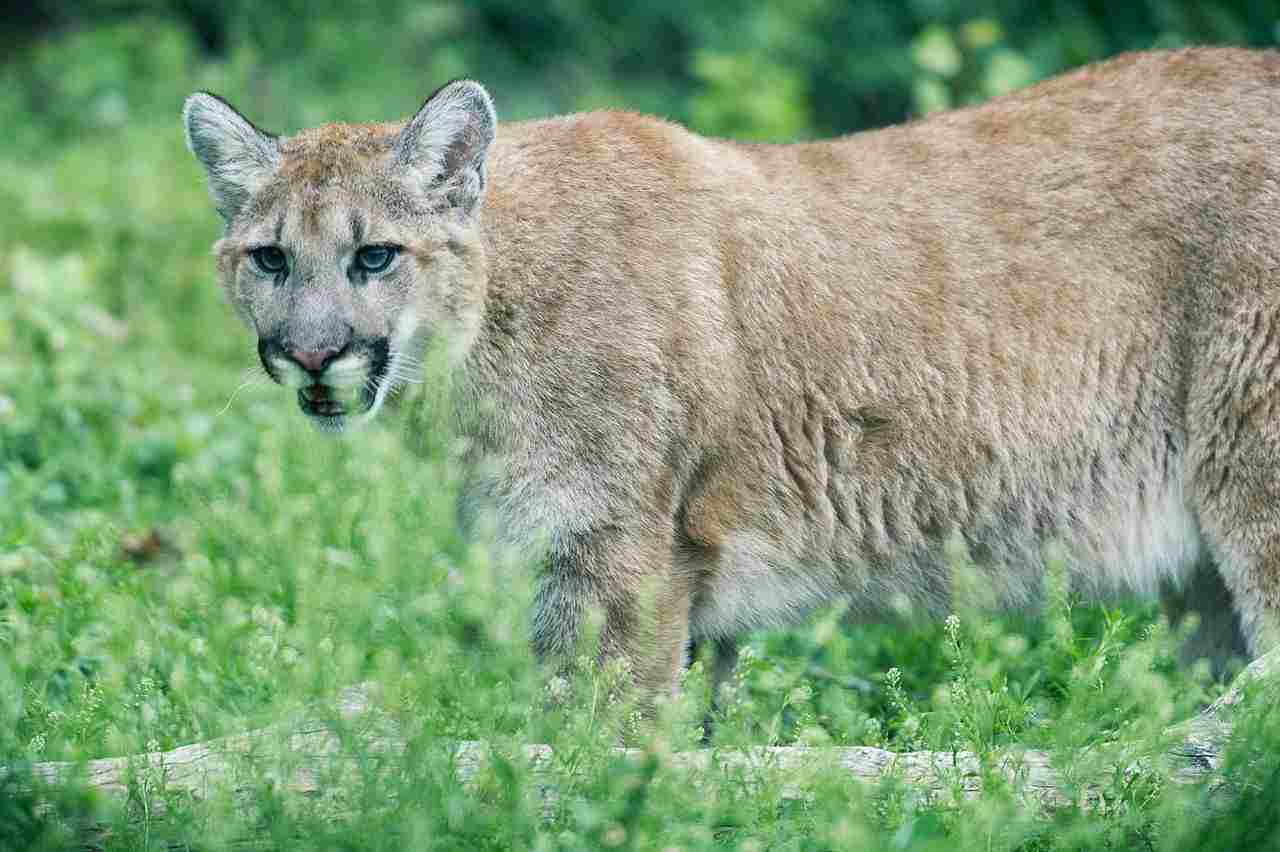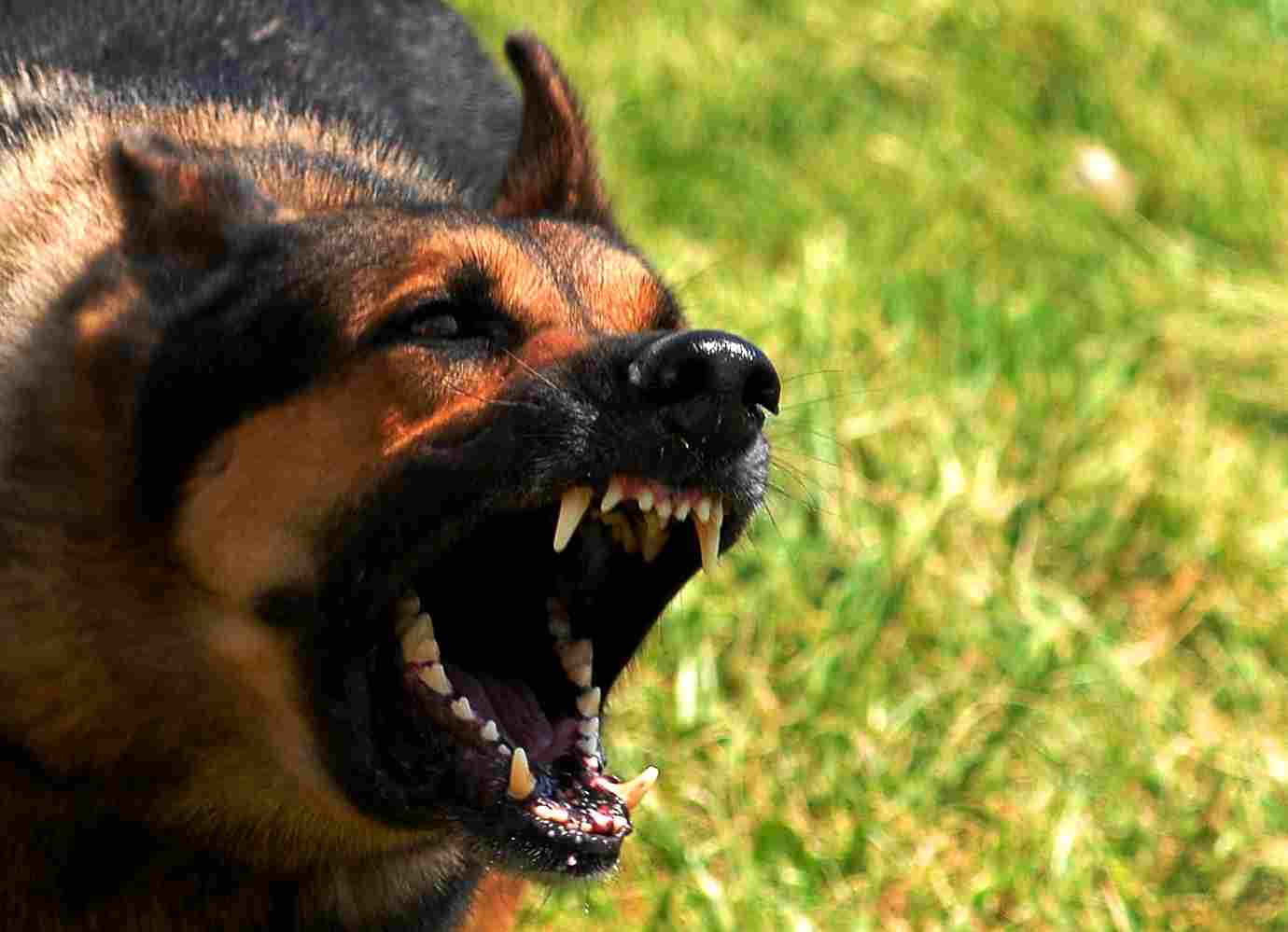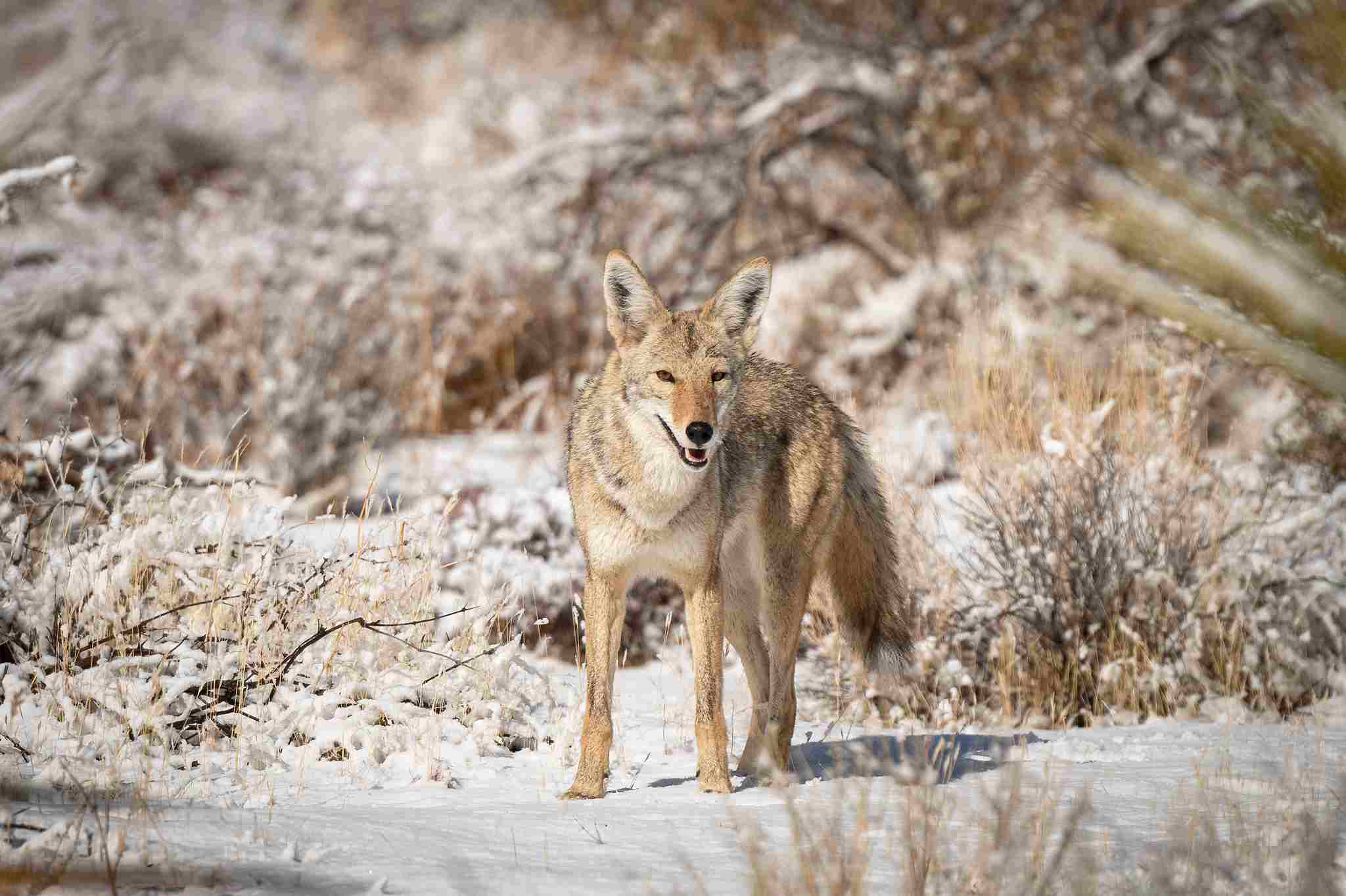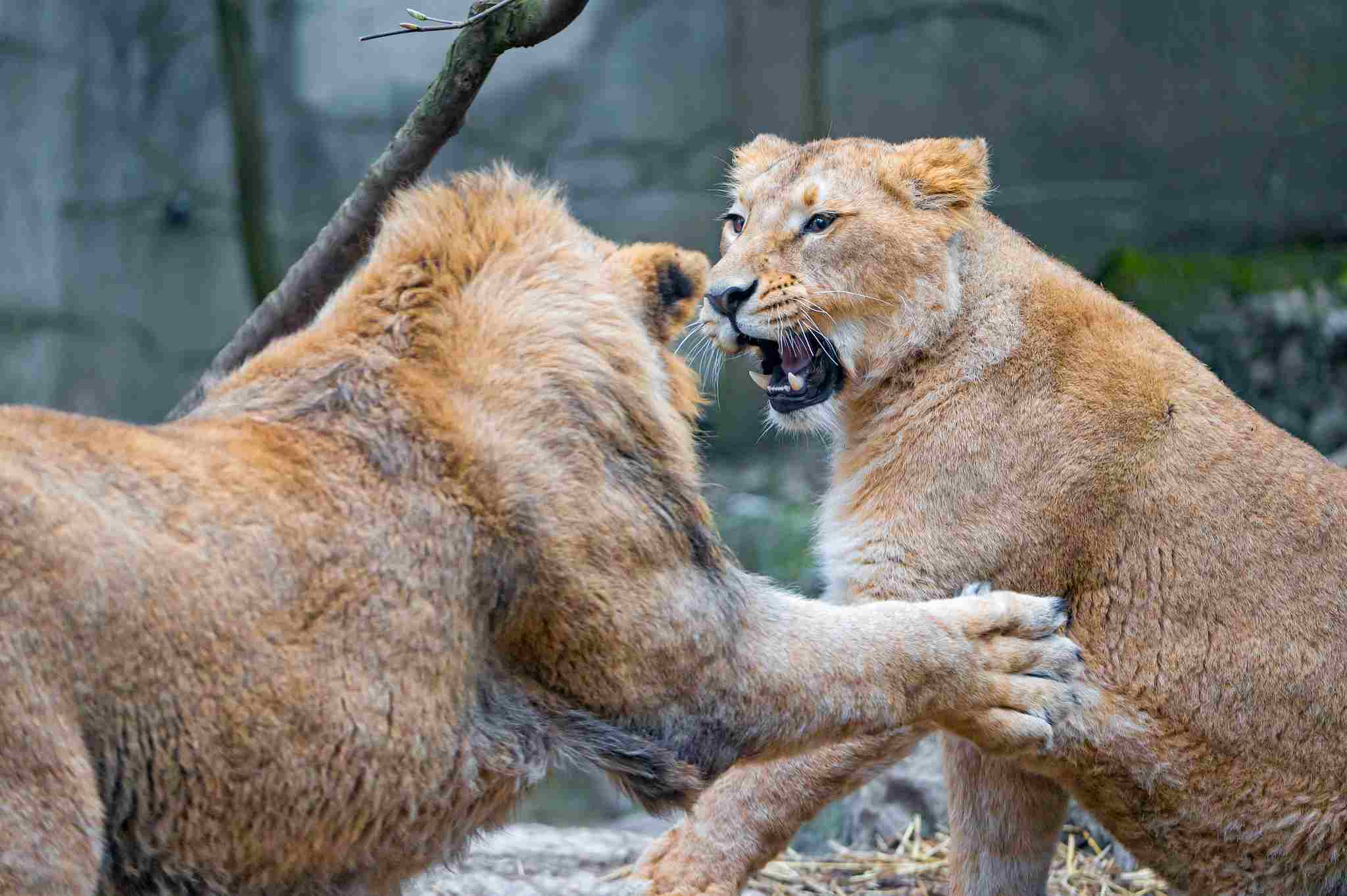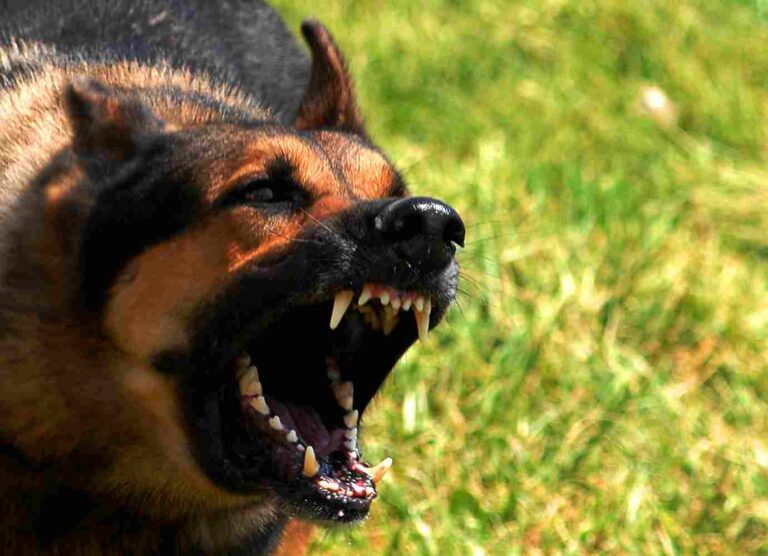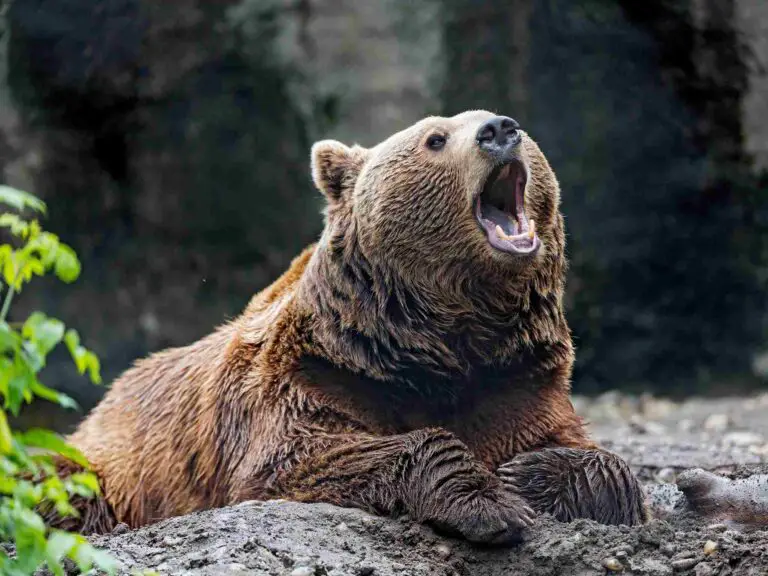Mountain Lion Vs Dog Tracks, Size, Ecological Comparison
Mountain lions have several advantages over dogs in a physical confrontation. They are larger and heavier, giving them a significant size advantage. Additionally, mountain lions are much faster and more agile, allowing them to quickly overpower their opponents.
They possess superior predatory features such as sharp claws and prominent teeth, which give them an edge in a fight. In this article, we will compare these factors and more to understand why a mountain lion would likely win in a fight against a dog.
Reasons Why a Mountain Lion Will Win a Dog In a Fight/Physical Confrontation
I). Size and Weight Advantages
One of the main reasons why a mountain lion would likely win in a fight against a dog is its size and weight advantage. Mountain lions are significantly larger and heavier than most dog breeds, giving them a physical advantage in a confrontation.
With an average length of 6 to 8 feet and weighing between 100 to 200 pounds, mountain lions are formidable predators. In comparison, the average dog weighs between 10 to 100 pounds, depending on the breed.
II). Mountain Lions are Much Faster and More Agile
In addition to their size advantage, mountain lions are also much faster and more agile than dogs. They are built for speed and have powerful hind legs that allow them to leap and pounce on their prey with incredible force.
Mountain lions can reach speeds of up to 50 miles per hour in short bursts, while dogs typically have a top speed of around 20 to 30 miles per hour. This speed and agility give mountain lions the ability to quickly overpower their opponents in a physical confrontation.
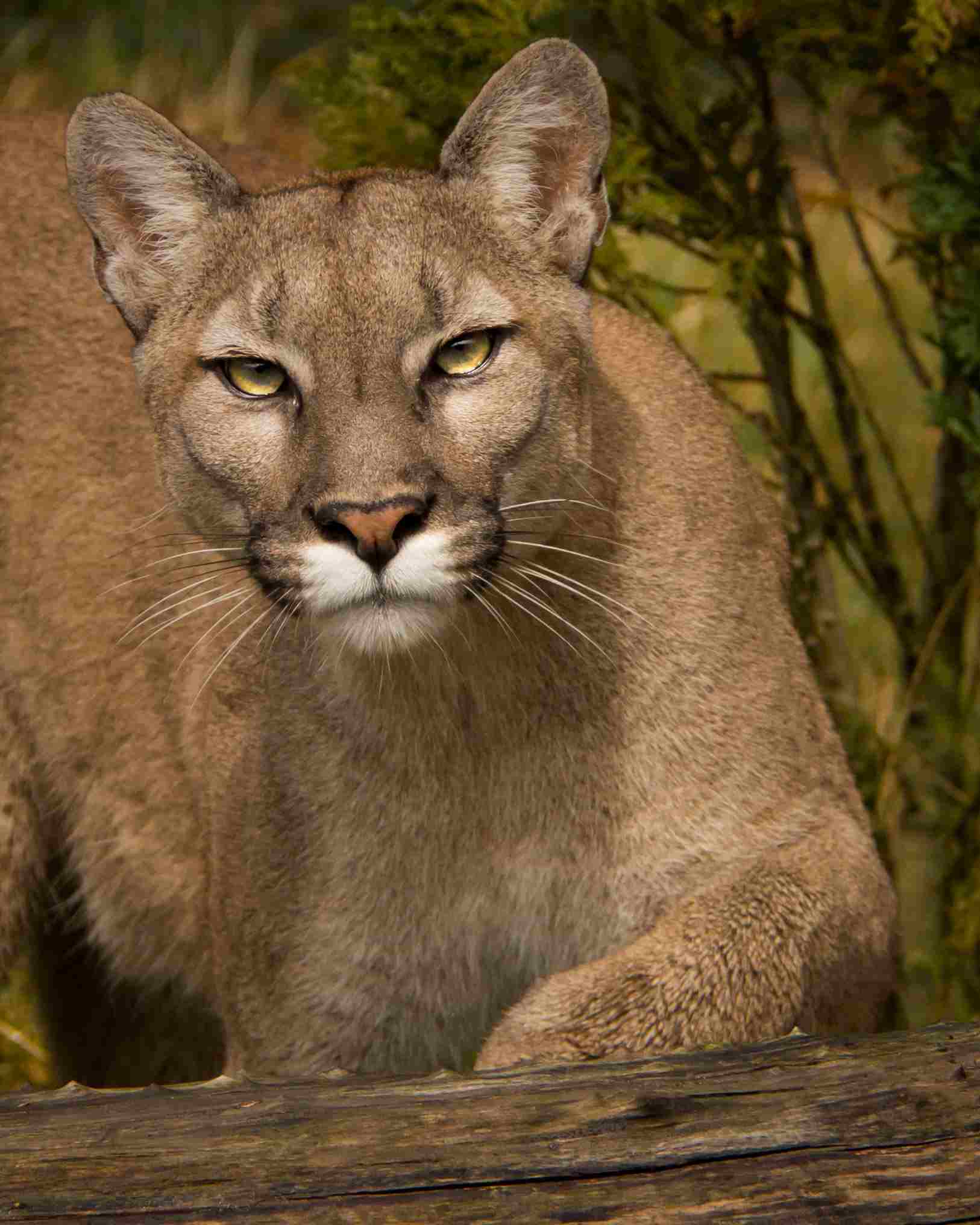
III). Possession of Superior Predatory Features
Mountain lions possess superior predatory features that give them an edge in a fight against a dog. They have sharp claws that can inflict deep wounds and retractable claws that provide better grip and traction. Their prominent teeth, including long canines, are designed for tearing and gripping prey. These predatory features, combined with their size, speed, and agility, make mountain lions formidable opponents in a physical confrontation.
Therefore, the size and weight advantages, along with the speed, agility, and possession of superior predatory features, give mountain lions the upper hand in a fight against a dog.
*Details of Comparison
| Aspect | Mountain Lions | Dogs |
| 1. Size and Weight | Larger (100-200 lbs.) |
Varies widely (few pounds to around 100 lbs.)
|
| 2. Speed and Agility | Faster and more agile |
Varies by breed, generally less agile
|
| 3. Predatory Features | Sharp claws, retractable claws, prominent teeth |
Varies by breed, limited predatory adaptations
|
| 4. Taxonomy | Felidae family, Puma genus |
Canidae family, Canis genus
|
| 5. Appearance | Tawny-colored fur, sleek and muscular body |
Diverse coat types, varied body shapes
|
| 6. Size Comparison | Larger in total body length and height at shoulder |
Varies by breed, most smaller than mountain lions
|
| 7. Weight | Heavier (130-220 lbs.) |
Varies by breed, generally lighter than mountain lions
|
| 8. Speed and Agility | Up to 50 mph |
Varies by breed, generally slower than mountain lions
|
| 9. Bite Force | Around 350 psi |
Varies by breed, generally lower than mountain lions
|
| 10. Overall Physical Capacity | Stronger, more endurance |
Varies by breed, generally less endurance
|
| 11. Habitat | Native to Americas, various ecosystems |
Domesticated, adaptable to various environments
|
| 12. Lifespan | 8-13 years (up to 20 years) |
Varies by breed, 8-15 years on average
|
| 13. Behavior | Solitary, territorial, stealthy hunting |
Social, domesticated, diverse behaviors
|
| 14. Reproduction | Every 2-3 years, fewer offspring |
Varies by breed, multiple litters per year possible
|
| 15. Danger to Humans | More dangerous due to predatory nature |
Can pose a threat, but generally less dangerous
|
| 16. Intelligence | Hunting instincts, adaptability |
Domestication, social intelligence
|
| 17. Tracks | Large, distinct tracks in soft soil or mud |
Smaller tracks, vary by breed
|
| 18. Conservation Status | Least concern, but some subspecies endangered |
Domesticated, no conservation status
|
1). Taxonomy
The taxonomy of mountain lions and dogs reveals interesting differences between these two species. Mountain lions, scientifically known as Puma concolor, belong to the Felidae family and the Puma genus. On the other hand, dogs, scientifically known as Canis lupus familiaris, belong to the Canidae family and the Canis genus.
When comparing the taxonomy of these animals, it becomes evident that they belong to different families and genera. While mountain lions are part of the cat family, dogs are part of the dog family. This distinction in taxonomy highlights the evolutionary divergence between these two species.
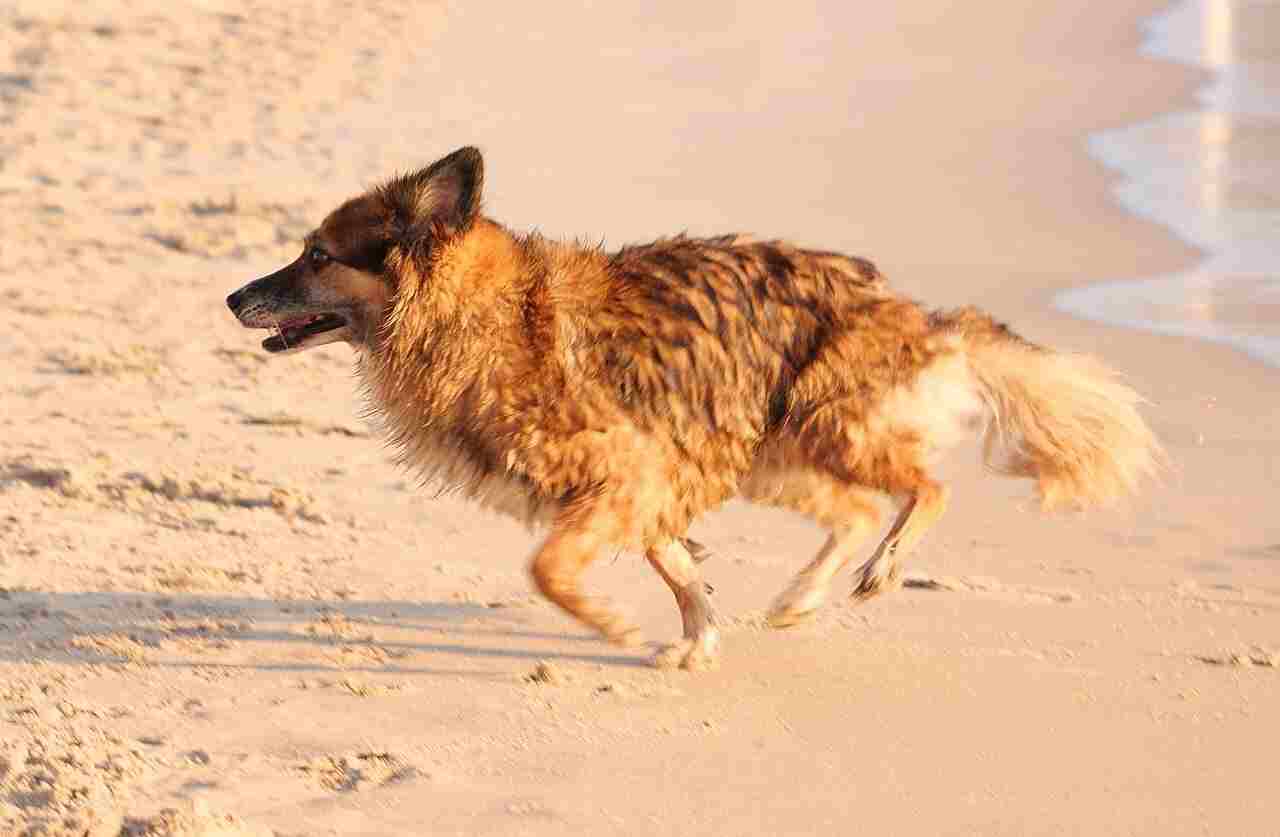
2). Appearance
The appearance of mountain lions and dogs showcases distinct differences between these two species. Starting with their coats, mountain lions have a short, tawny-colored fur that helps them blend into their surroundings, providing effective camouflage during hunting. On the other hand, dogs come in a wide variety of coat types and colors, depending on the breed.
In terms of stature and build, mountain lions have a sleek and muscular body, with a long tail that aids in balance and agility. They have a more elongated and streamlined appearance compared to dogs. Dogs, on the other hand, come in various shapes and sizes, with different body types depending on their breed. Some dogs have a stocky and robust build, while others have a slender and athletic physique.
When comparing the overall appearance of these animals, it is clear that mountain lions have a more uniform and specialized physical appearance, adapted for their predatory lifestyle. Dogs, on the other hand, exhibit a wide range of appearances due to selective breeding for various purposes such as companionship, herding, or hunting.
Therefore, the appearance of mountain lions and dogs differs significantly. Mountain lions have a tawny-colored fur for camouflage and a sleek, muscular build, while dogs come in various coat types and have diverse body shapes depending on their breed.
3). Mountain Lion Vs Dog Size
When comparing the size of mountain lions and dogs, there are notable differences in their total body length and height at the shoulders. Mountain lions, also known as cougars or pumas, are larger in size compared to most dog breeds. On average, adult male mountain lions measure around 7 to 8 feet in total body length, including their long tail, and stand at a shoulder height of approximately 2.5 to 3 feet. Adult female mountain lions are slightly smaller, measuring around 6 to 7 feet in length and standing at a shoulder height of 2 to 2.5 feet.
In contrast, the size of dogs can vary significantly depending on the breed. While some dog breeds can be similar in size to mountain lions, most dogs are considerably smaller. For example, large dog breeds like Great Danes or Irish Wolfhounds can reach similar heights at the shoulders as mountain lions, but their total body length is generally shorter. On the other hand, smaller dog breeds like Chihuahuas or Dachshunds are significantly smaller in both length and height compared to mountain lions.
Therefore, mountain lions tend to be larger in size compared to the majority of dog breeds. Their long bodies and muscular build contribute to their impressive size, making them formidable predators in their natural habitat.
4). Weight
Adult male mountain lions can weigh anywhere between 130 to 220 pounds, with some exceptional individuals reaching up to 250 pounds. On the other hand, the weight of dogs varies greatly depending on the breed. Larger dog breeds like Saint Bernards or Mastiffs can weigh over 150 pounds, but most dog breeds are considerably lighter. Smaller dog breeds like Chihuahuas or Pomeranians typically weigh between 2 to 10 pounds.
The weight difference between mountain lions and dogs is primarily due to their distinct evolutionary adaptations and ecological roles. Mountain lions are apex predators, requiring a larger body size to take down their prey and survive in their natural habitat. Dogs, on the other hand, have been selectively bred by humans for various purposes, resulting in a wide range of sizes and weights.
In terms of sheer strength and power, the weight advantage of mountain lions gives them an edge over most dog breeds. However, it’s important to note that individual factors such as size, health, and experience can also influence the outcome of any potential encounter between a mountain lion and a dog.
Therefore, the weight of mountain lions is significantly greater than that of most dog breeds, reflecting their position as apex predators in their respective ecosystems.
5). Speed and Agility
Mountain lions are known for their exceptional speed and agility, allowing them to chase down and capture their prey with precision. With their muscular bodies and long hind limbs, mountain lions can reach speeds of up to 50 miles per hour in short bursts, making them one of the fastest land animals.
On the other hand, dogs also possess impressive speed and agility, but their capabilities vary depending on the breed. Sighthounds like Greyhounds and Salukis are renowned for their incredible speed, reaching speeds of up to 45 miles per hour. Other breeds, such as Border Collies and Australian Shepherds, excel in agility and are known for their quick reflexes and nimble movements.
The speed and agility of both mountain lions and dogs are adaptations that have allowed them to thrive in their respective environments. While mountain lions rely on their speed to hunt and capture prey, dogs have been selectively bred for specific tasks, such as herding or hunting, which has influenced their agility and speed.
6). Bite Force
Mountain lions have a powerful bite force, with an average psi (pounds per square inch) of around 350. This allows them to deliver a lethal bite to their prey, piercing through flesh and bone with ease. Their sharp, retractable claws also aid in subduing and immobilizing their prey.
On the other hand, dogs exhibit a wide range of bite forces depending on their breed and size. Larger breeds such as the Rottweiler or the German Shepherd can exert a bite force of around 300 psi, while smaller breeds like the Chihuahua have a bite force of around 200 psi. It is worth noting that certain dog breeds, such as the Kangal or the Tosa Inu, have been selectively bred for their powerful bite force, which can exceed that of a mountain lion.
The bite force of both mountain lions and dogs is a crucial aspect of their hunting and survival. While mountain lions rely on their powerful jaws to deliver a swift and lethal bite, dogs have developed different bite forces depending on their specific roles and tasks. Whether it is for hunting, guarding, or companionship, dogs have been selectively bred to possess the bite force necessary for their intended purpose.
While mountain lions generally have a higher average bite force than dogs, it is important to consider the specific breed and size of the dog in question.
7). Overall Physical Capacity (Which is Stronger?)
When comparing the overall physical capacity of a mountain lion and a dog, it is clear that the mountain lion holds the advantage. With its larger size, heavier weight, and greater muscle mass, the mountain lion possesses a superior strength and endurance that surpasses that of a dog.
In terms of size, mountain lions are significantly larger than most dog breeds. They can reach lengths of up to 8 feet and weigh between 100 to 200 pounds, depending on their gender and geographical location. Dogs, on the other hand, vary greatly in size, with some breeds weighing as little as a few pounds and others reaching up to 200 pounds. However, even the largest dog breeds cannot match the size and power of a mountain lion.
Furthermore, the muscle mass of a mountain lion is specifically adapted for hunting and taking down prey. Their strong and agile bodies allow them to navigate through various terrains and pounce on their targets with precision. Dogs, while possessing their own unique set of physical abilities, do not possess the same level of strength and endurance as mountain lions.
In a violent confrontation between a mountain lion and a dog, the mountain lion’s overall physical capacity would likely result in the demise of the dog. The combination of its size, weight, muscle mass, and endurance gives the mountain lion a significant advantage in terms of strength and power.
Therefore, when comparing the overall physical capacity of a mountain lion and a dog, it is evident that the mountain lion is stronger. Its larger size, heavier weight, and greater muscle mass contribute to its superior strength and endurance, making it a formidable predator.
8). Habitat
Mountain lions are primarily found in North and South America, inhabiting a wide range of habitats such as forests, mountains, deserts, and grasslands. They are adaptable predators that can thrive in diverse environments, from dense forests to arid regions. On the other hand, dogs have a much broader geographic range, with various breeds found across the globe. Dogs have adapted to live in a wide range of habitats, including urban areas, rural landscapes, and even extreme climates.
Mountain lions are solitary animals that require large territories to hunt and roam. They prefer areas with ample cover and prey availability, such as deer and smaller mammals. Dogs, on the other hand, have a more flexible habitat requirement and can adapt to different environments based on their breed and domestication. They can live in homes, farms, or even in the wild, depending on their circumstances.
Therefore, the habitat of a mountain lion and a dog differs significantly due to their distinct ecosystems and geographic ranges. While mountain lions are primarily found in the Americas and inhabit various natural habitats, dogs have a global presence and can adapt to a wide range of environments.
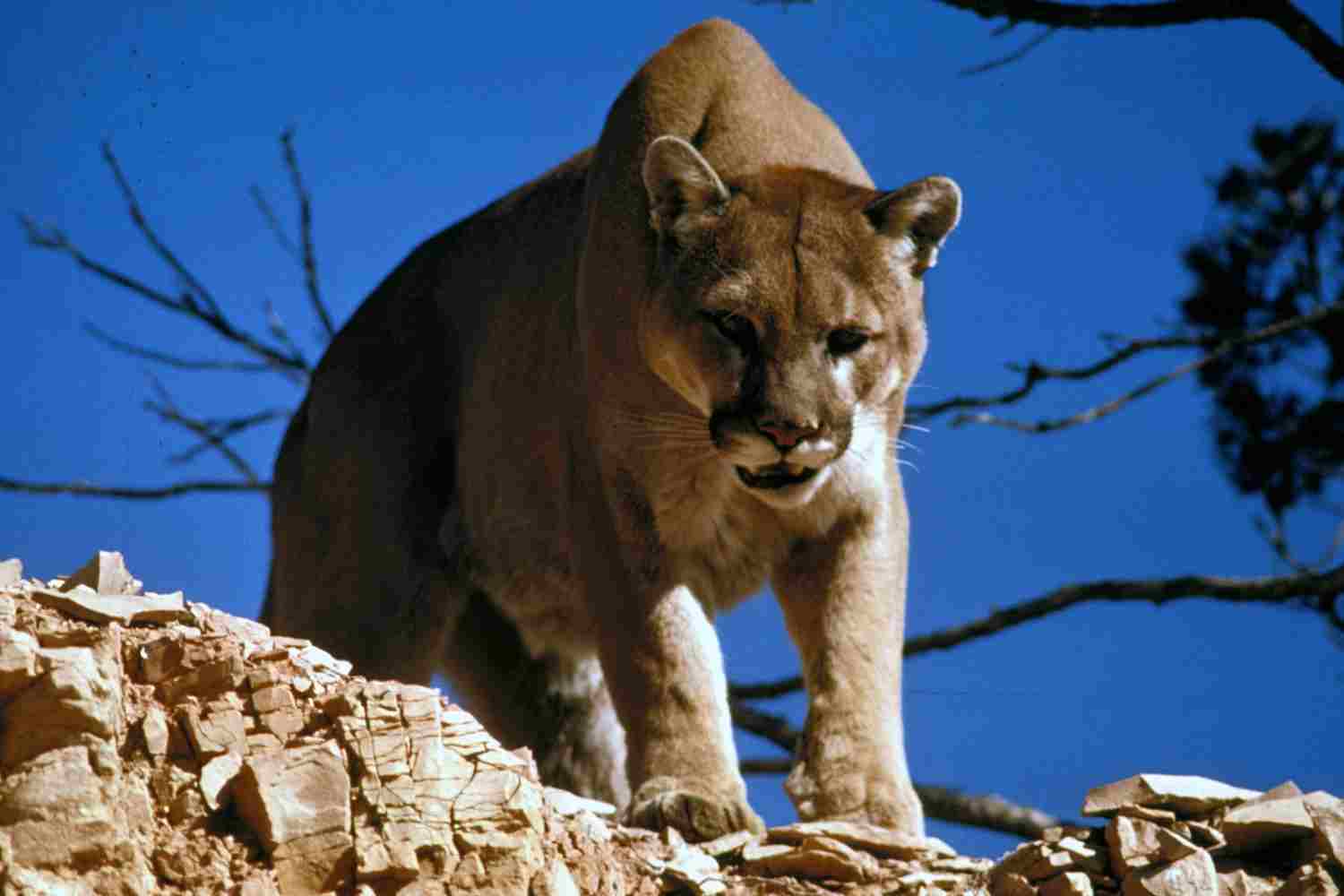
9). Lifespan
Mountain lions, also known as cougars or pumas, have an average lifespan of around 8 to 13 years in the wild. However, some individuals have been known to live up to 20 years. On the other hand, the lifespan of dogs can vary greatly depending on their breed, size, and overall health. Smaller dog breeds tend to have longer lifespans, ranging from 10 to 15 years, while larger breeds may have shorter lifespans of around 8 to 12 years.
Factors such as genetics, diet, exercise, and healthcare also play a significant role in determining the lifespan of both mountain lions and dogs. Mountain lions in captivity tend to live longer than their wild counterparts, with some individuals reaching their late teens or early twenties. Similarly, well-cared-for dogs that receive proper nutrition, regular veterinary care, and exercise tend to live longer and healthier lives.
It is important to note that these lifespan ranges are general estimates and can vary depending on individual circumstances. Generally, while mountain lions have a relatively shorter lifespan compared to some dog breeds, both species can live fulfilling lives when provided with the necessary care and resources.
10). Behavior
When comparing the behavior of mountain lions and dogs, several key aspects come into play. One significant difference lies in their feeding habits. Mountain lions are solitary hunters, relying on their stealth and agility to stalk and ambush their prey. In contrast, dogs are domesticated animals that have been bred to rely on humans for their food. While some dogs may still exhibit hunting behaviors, they generally do not rely on hunting for survival.
Aggression is another aspect to consider. Mountain lions are known for their territorial nature and can display aggressive behavior when their space is threatened. Dogs, on the other hand, can exhibit aggression towards other animals or humans, but this behavior is often influenced by their training and socialization.
Vocalization is also a distinguishing factor. Mountain lions are known for their distinctive screams, growls, and hisses, which they use for communication and territorial displays. Dogs, on the other hand, have a wide range of vocalizations, including barking, howling, and whimpering, which they use to communicate with humans and other dogs.
In terms of social behavior, dogs are highly social animals that thrive on companionship and interaction with humans and other dogs. Mountain lions, on the other hand, are solitary animals that prefer to live and hunt alone.
When it comes to parenting, dogs are known for their nurturing behavior towards their offspring, providing care and protection. Mountain lions also exhibit parental care, with the female raising her cubs until they are old enough to venture out on their own.
Therefore, the behavior of mountain lions and dogs differs significantly in terms of feeding habits, aggression, vocalization, social behavior, and parenting. These differences are influenced by their evolutionary history, domestication, and ecological roles.
11). Reproduction
Mountain lions are viviparous, meaning they give birth to live young. The female mountain lion has a gestation period of approximately 90 to 96 days before giving birth to a litter of one to six cubs. In contrast, dogs are also viviparous, with a gestation period of around 58 to 68 days. Dogs typically give birth to a larger litter size, ranging from one to twelve puppies.
Another aspect to compare is the parental care provided by each species. Female mountain lions play a crucial role in raising their cubs, providing them with protection, guidance, and teaching them essential hunting skills. Dogs also exhibit parental care, with the mother dog nursing and nurturing her puppies until they are old enough to eat solid food and explore their surroundings.
In terms of reproductive rates, mountain lions have a slower reproductive rate compared to dogs. Mountain lions typically reproduce every two to three years, while dogs can reproduce multiple times a year, depending on their breed and reproductive cycle.
Generally, the reproductive strategies and behaviors of mountain lions and dogs differ significantly. Mountain lions have a longer gestation period, smaller litter size, and slower reproductive rate, while dogs have a shorter gestation period, larger litter size, and faster reproductive rate. These differences are influenced by their evolutionary adaptations and ecological roles.
12). Danger Posed to Humans
A mountain lion is undeniably more dangerous than a dog when it comes to the potential harm it can cause to humans. This is primarily due to its superior speed, agility, unpredictability, and predatory nature. While dogs can certainly pose a threat in certain situations, their behavior is generally more predictable and controllable compared to that of a mountain lion.
When it comes to the rate of human deaths caused, mountain lions have been known to attack and kill humans, although such incidents are relatively rare. On the other hand, dog attacks on humans are more common but typically result in less severe injuries. It is important to note that both mountain lions and dogs can be dangerous if they feel threatened or provoked.
If you happen to encounter a mountain lion or a potentially aggressive dog, it is crucial to take certain precautions. In the case of a mountain lion, it is recommended to avoid direct eye contact, make yourself appear larger by raising your arms or opening your jacket, and slowly back away without turning your back. If a dog appears aggressive, it is best to avoid sudden movements, remain calm, and try to create distance between yourself and the dog.
13). Intelligence
Mountain lions, also known as cougars or pumas, are highly intelligent predators. They possess excellent problem-solving skills and are adept at hunting and stalking their prey. Their ability to adapt to different environments and successfully navigate their territories demonstrates their intelligence.
On the other hand, dogs have been domesticated for thousands of years and have developed a unique bond with humans. They exhibit a remarkable level of social intelligence, understanding human cues and emotions. Dogs are also capable of learning complex commands and tasks, making them highly trainable.
While mountain lions rely on their instincts and natural hunting abilities, dogs have been selectively bred for specific traits and purposes. This selective breeding has resulted in a wide range of dog breeds with varying levels of intelligence and specialized skills.
Therefore, both mountain lions and dogs possess intelligence, but in different ways. Mountain lions demonstrate their intelligence through their hunting strategies and adaptability, while dogs showcase their intelligence through their social skills and trainability. It is difficult to determine which animal is more intelligent, as their intelligence is shaped by their unique evolutionary paths and interactions with humans.
14). Tracks
Mountain lion tracks are characterized by their large size and distinct shape. They typically measure around 3 to 4 inches in diameter and have four toes with retractable claws. The hind tracks often show a clear imprint of the heel pad, while the front tracks may display the marks of the dewclaw. These tracks are commonly found in soft soil or mud near their hunting grounds or territorial boundaries.
On the other hand, dog tracks vary significantly depending on the breed and size of the dog. Generally, dog tracks are smaller than mountain lion tracks, ranging from 1 to 3 inches in diameter. They typically have four toes with visible claw marks and a more rounded shape compared to the elongated shape of mountain lion tracks. Dog tracks can be found in various terrains, including dirt, sand, or snow.
By analyzing the tracks left by mountain lions and dogs, wildlife experts and trackers can determine the presence of these animals in a particular area. The size and shape of the tracks can help identify the species and provide valuable information about their behavior and movement patterns. This knowledge is crucial for wildlife conservation efforts and understanding the ecological dynamics between these two species.
15). Conservation Status
While mountain lions are generally considered a species of least concern, some subspecies are classified as endangered or threatened. This classification is due to the main threats to the survival of their wild populations, such as habitat loss, fragmentation, and human-wildlife conflict. On the other hand, dogs, as domesticated animals, do not have a conservation status.
Mountain lions face habitat loss and fragmentation as human development expands into their territories. This encroachment limits their access to prey and disrupts their natural movement patterns. Additionally, conflicts with humans, including livestock depredation and perceived threats to human safety, often result in the killing of mountain lions.
Dogs, being domesticated and living in close proximity to humans, do not face the same conservation challenges as mountain lions. However, it is important to note that responsible pet ownership and population control are crucial for the well-being of domestic dogs and to prevent overpopulation and subsequent abandonment.
Therefore, while mountain lions face conservation concerns due to habitat loss, fragmentation, and human-wildlife conflict, dogs do not have a conservation status.

Conclusion
I). SIMILARITIES
In comparing mountain lions and dogs, there are several similarities between these animals. Both are mammals and belong to the class Mammalia. They also share similarities in terms of their basic body structure, with four legs, a tail, and a head. Additionally, both mountain lions and dogs are carnivorous, meaning they primarily feed on meat.
II). DIFFERENCES
Despite the similarities, there are significant differences between mountain lions and dogs. One of the main differences is their size. Mountain lions are much larger than dogs, with adult males weighing between 120 and 220 pounds, while dogs typically range from a few pounds to around 100 pounds. Another difference is their natural habitat.
Mountain lions are native to the Americas and are found in a variety of habitats, including forests, mountains, and deserts. Dogs, on the other hand, have been domesticated and can be found in various environments, including urban areas and rural settings.

